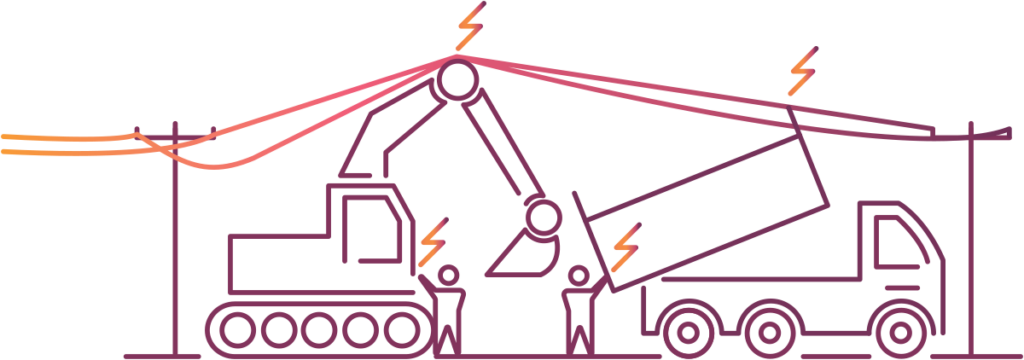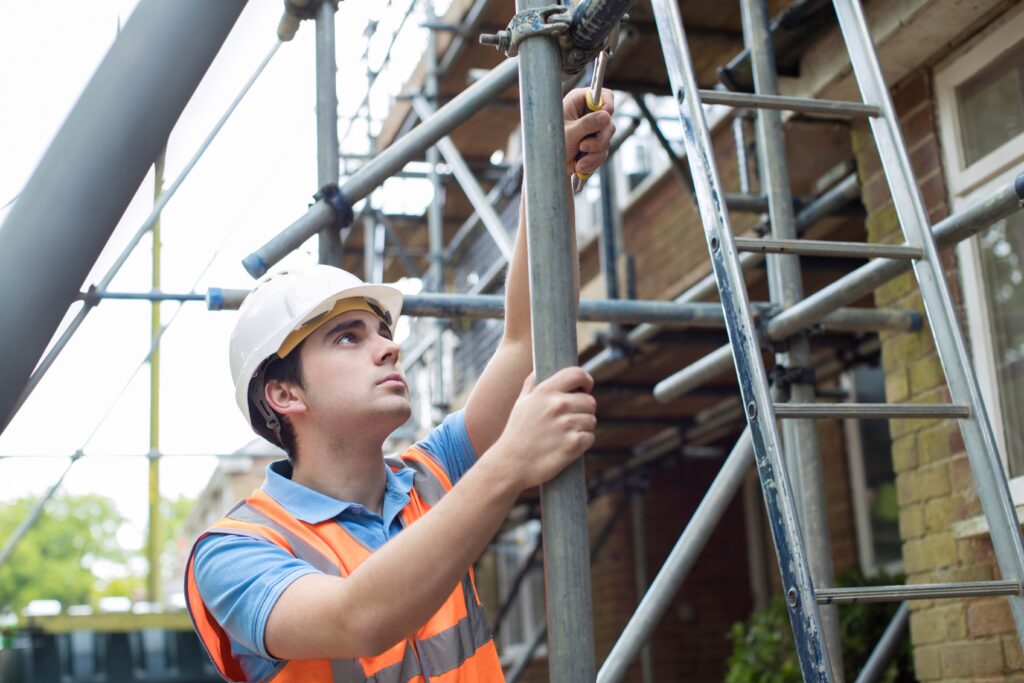Working near or on our network
The following information has been designed to keep those working near or on the Counties Energy network, and those around them, safe.
Before working, transporting, or building near network electrical assets like substations, transformers, and power lines, please familiarise yourself with the information below.

To prioritise the safety of yourself, your family, employees, and contractors, all activities near electrical assets must comply with New Zealand Electrical Code of Practice for Electrical Safe Distances (NZECP 34:2001).
Understanding your responsibilities and obtaining the appropriate permit for working near electrical sources is crucial, as electricity can “arc” or jump over gaps, making it hazardous to get too close.

Building near overhead lines
Safety should be your number one priority when planning construction activities near our power lines. Temporary and permanent structures, including garages and house extensions, must legally comply with the New Zealand Electrical Code of Practice for Electrical Safe Distances (NZECP 34:2001) to maintain a safe distance from overhead lines at all times.
The safe distance required between new buildings and overhead lines varies depending on the voltage of the power lines nearby. Find out more about the Code and your responsibilities here.
If you are working within 4 metres of overhead lines, or digging within 5 metres of electrical or gas equipment, you’ll also need to complete a Close Approach Consent application. This is a legal requirement set out by the New Zealand Electrical Code of Practice for Electrical Safe Distances to ensure all work is completed safely.
Need to carry out repairs to roofing, spouting, paint, water blast, or trim trees near power lines?
Stay safe by applying for our free temporary disconnection and reconnection service – available 8am-4pm weekdays (excluding public holidays) to private properties on our network.

Safety around underground cables
Before commencing any type of earthworks, make sure you locate any underground cables, pipes, and other utility assets in and around your proposed dig site – protecting yourself, those around you, and your equipment.
You can obtain this information efficiently via the online service beforeUdig.
Counties Energy approved contractor for Cable Locates
Company name: Utility Works Ltd
Contact Number: 0800 779 588
Company name: Locate Services
Contact Number: 0800 872 2348
Email: admin@locateservices.co.nz
Before you start digging, here are some essential factors to consider:
To check for the approximate location of underground cables in your backyard before you dig, request plans at least 2 days before starting work from beforeudig.co.nz
Review the plan and mark out all services as show on the plan
If you are planning to dig within 10 metres of our underground cables, you must use an underground locator where possible to track and mark out any cables in the area
There are multiple suppliers of underground locators, with rentals available also
All work with 2 metres of subtrans electrical cables requires a Counties Energy stand over
Transportation of a high load over 5 metres under overhead power lines requires a high load authorisation. This authorisation is to ensure safe passage, network protection, and, most importantly, keeps you and those around you safe in transit.
The Counties Energy team provides high load authorisation following the successful completion and submission of our online Over Dimension Load application form below.
Please allow five business days for your application to be assessed.
Once approved, your authorisation number will be emailed to the address provided in your submitted application.
Request a high-load permit for transportation on our network using the form below. See below our suggested high-load routes:
Route 1: From Papakura to Mercer using the Great South Road
- Firth Street
- Bremner Road
- Victoria Street
- State Highway 22
- Motorway through to Mercer heading either north or south.
Route 2: From Papakura to Maramarua using Great South Road
- Firth Street
- Bremner Road
- Victoria Street
- State Highway 22, onto
- State Highway 2 through to Maramarua either north or south.
Route 3: From Papakura to BHP Glenbrook (NZ Steel) using Great South Road
- Firth Street
- Bremner Road
- Victoria Street
- State Highway 22
- Glenbrook Road
- Brookside Road onto
- Mission Bush Road
- Glenbrook either north or south
Please note that the main routes have a clearance of 5.5 metres.
To move an over dimension load through the network, please refer to the designated high load routes, or complete the form.